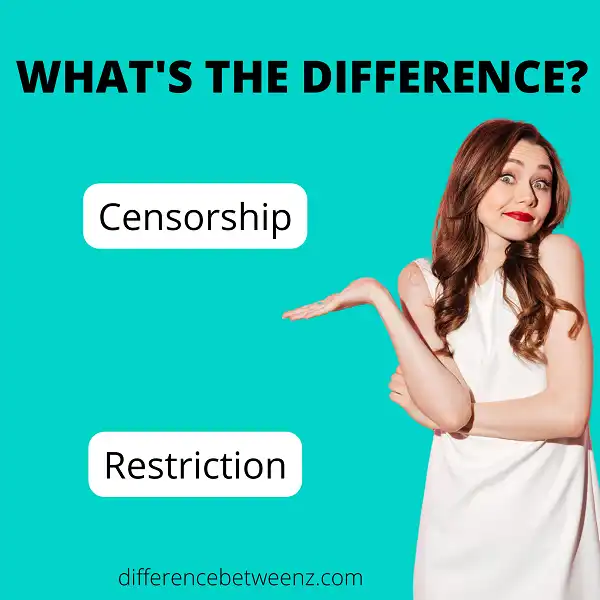There is a big difference between censorship and restrictions. Censorship is when the government or other authority figures prevent certain content from being available to the public. Restrictions, on the other hand, are when individuals or organizations put limitations on what people can do or see. While both have the potential to hinder freedom of speech and expression, censorship is usually much more severe. In many cases, it can lead to complete suppression of information. It’s important to understand the difference between these two concepts in order to protect our rights and freedoms.
What is Censorship?
Censorship is the suppression of speech, public communication, or other information that may be considered objectionable, harmful, sensitive, politically incorrect, or inconvenient as determined by governments, media outlets, authorities, or other groups or institutions. Censorship can be conducted by governments and private organizations. Governments may engage in censorship. Other times, private individuals or groups may pressure corporations to engage in self-censorship. Censorship also occurs in a variety of less overt ways, such as propaganda, media bias, and spin.
Censorship is often considered necessary to protect vulnerable groups and to maintain public order and safety. In some cases, it may be seen as a form of protecting human rights. In other cases, it may be seen as an infringement on freedom of expression and speech. Censorship by the government is usually illegal in democracies. Censorship by private organizations is not always illegal and may not be subject to government regulation. Censorship has been a highly debated topic throughout history with various individuals and groups arguing for or against its use.
What is Restriction?
Restriction refers to the limitations that are placed on something. In terms of research, restrictions are often placed on studies in order to protect the participants. For example, a study might be restricted to a certain age group or geographic location. Restrictions can also be placed on data, such as restricting access to only those who have signed a non-disclosure agreement. In general, restrictions are put in place in order to protect individuals or information.
Difference between Censorship and Restrictions
Censorship is the removal or suppression of speech or writing that is considered objectionable. Censorship can be imposed by governments, private institutions, and individuals. Restrictions are limitations or rules that are placed on speech or writing. Unlike censorship, restrictions are not intended to remove or suppress materials deemed objectionable. Instead, they are meant to regulate the time, place, and manner in which those materials are accessed. For example, a library may restrict the use of its computers to adults during certain hours in order to prevent children from accessing inappropriate content. Similarly, a school may restrict student access to the internet during class time in order to prevent disruptions. In both cases, the goal is not to remove all objectionable material, but simply to regulate its use.
Conclusion
The difference between censorship and restrictions is an important one to understand. Censorship suppresses information, while restrictions limit access to certain types of information or communication tools. In some cases, both censorship and restrictions may be in effect at the same time. It’s important for internet users to be aware of these differences as they work to protect their online rights.


